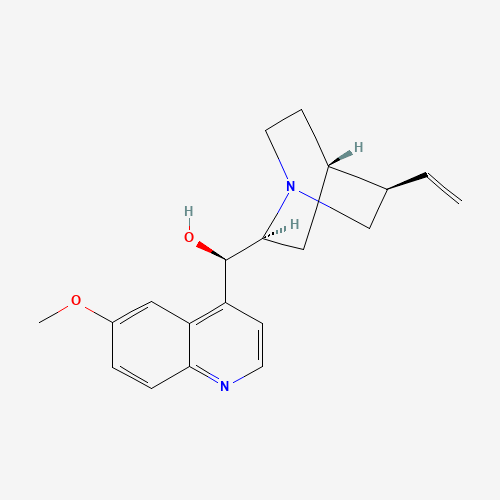| Pharmaceutical Information |
| Drug Name |
Quinine |
| Drug ID |
BADD_D01895 |
| Description |
An alkaloid derived from the bark of the cinchona tree. It is used as an antimalarial drug, and is the active ingredient in extracts of the cinchona that have been used for that purpose since before 1633. Quinine is also a mild antipyretic and analgesic and has been used in common cold preparations for that purpose. It was used commonly and as a bitter and flavoring agent, and is still useful for the treatment of babesiosis. Quinine is also useful in some muscular disorders, especially nocturnal leg cramps and myotonia congenita, because of its direct effects on muscle membrane and sodium channels. The mechanisms of its antimalarial effects are not well understood. |
| Indications and Usage |
For the treatment of malaria and leg cramps |
| Marketing Status |
approved |
| ATC Code |
P01BC01 |
| DrugBank ID |
DB00468
|
| KEGG ID |
D08460; D08461
|
| MeSH ID |
D011803
|
| PubChem ID |
3034034
|
| TTD Drug ID |
D03DDR
|
| NDC Product Code |
65162-811 |
| UNII |
A7V27PHC7A
|
| Synonyms |
Quinine | Quinimax | Quinine Bisulfate | Bisulfate, Quinine | Quinine Hydrochloride | Hydrochloride, Quinine | Myoquin | Quinamm | Quinbisan | Legatrim | Quinine Lafran | Quinine Sulfate | Sulfate, Quinine | Quinine Sulphate | Sulphate, Quinine | Quinine-Odan | Quinoctal | Surquina | Biquinate | Strema | Quindan | Quinbisul | Quinson | Quinsul |
|
| Chemical Information |
| Molecular Formula |
C20H24N2O2 |
| CAS Registry Number |
72402-53-0 |
| SMILES |
COC1=CC2=C(C=CN=C2C=C1)C(C3CC4CCN3CC4C=C)O |
| Chemical Structure |

|
|
| ADRs Induced by Drug |
|
|
*The priority for ADR severity classification is based on FAERS assessment, followed by the most severe level in CTCAE rating. If neither is available, it will be displayed as 'Not available'.
**The 'Not Available' level is hidden by default and can be restored by clicking on the legend twice.
|
|
|

